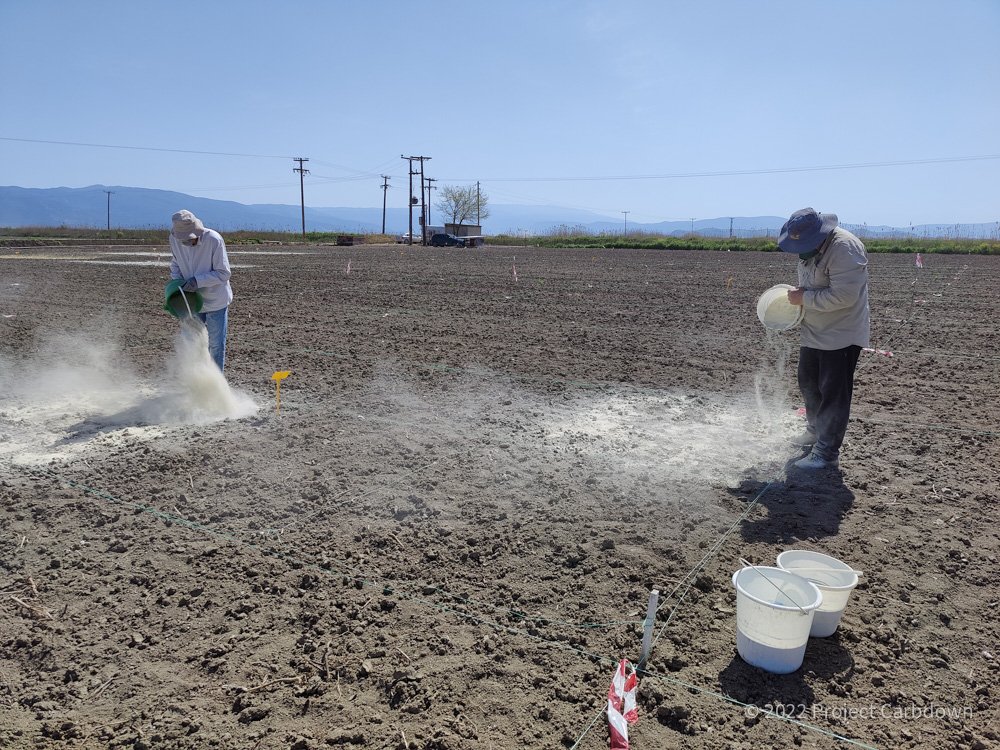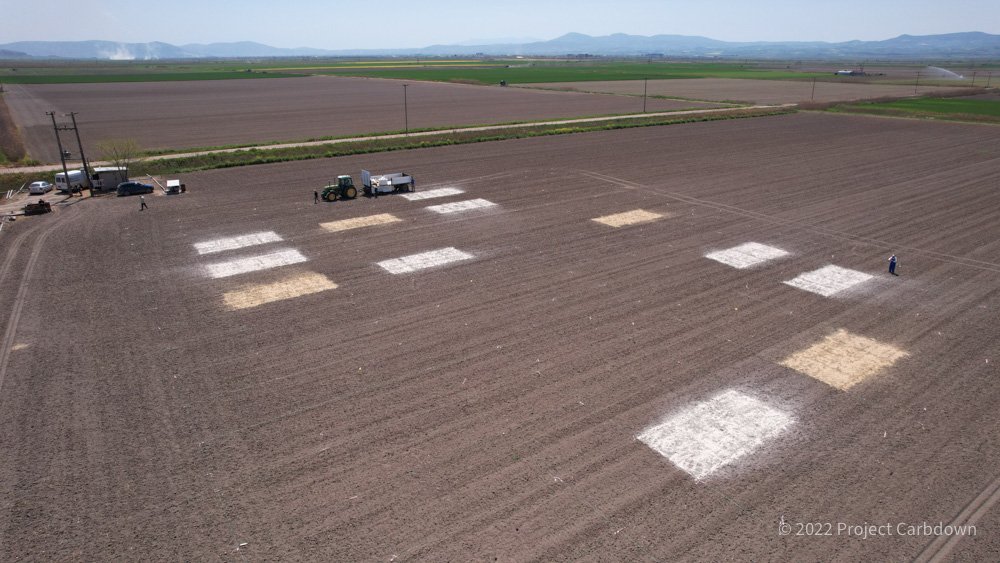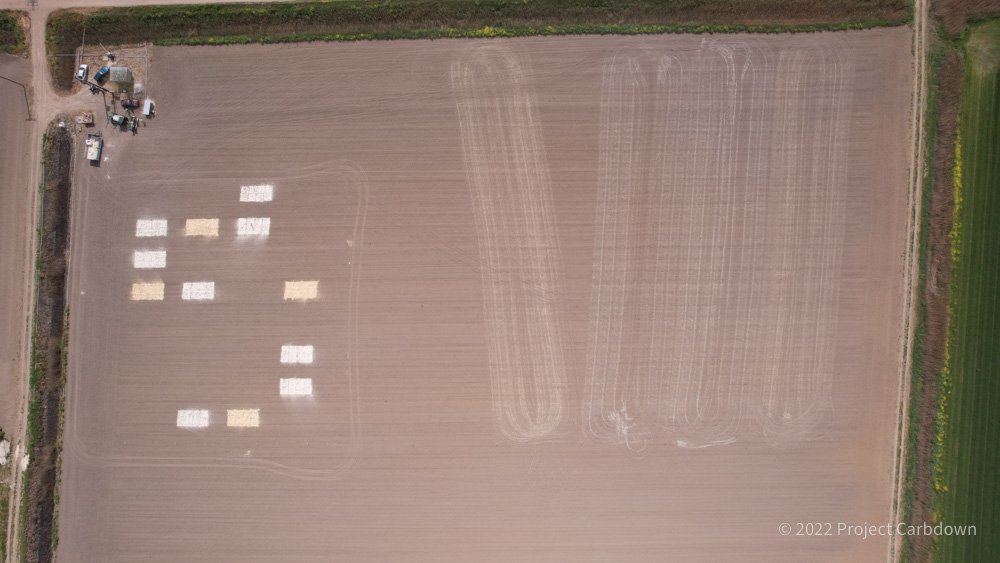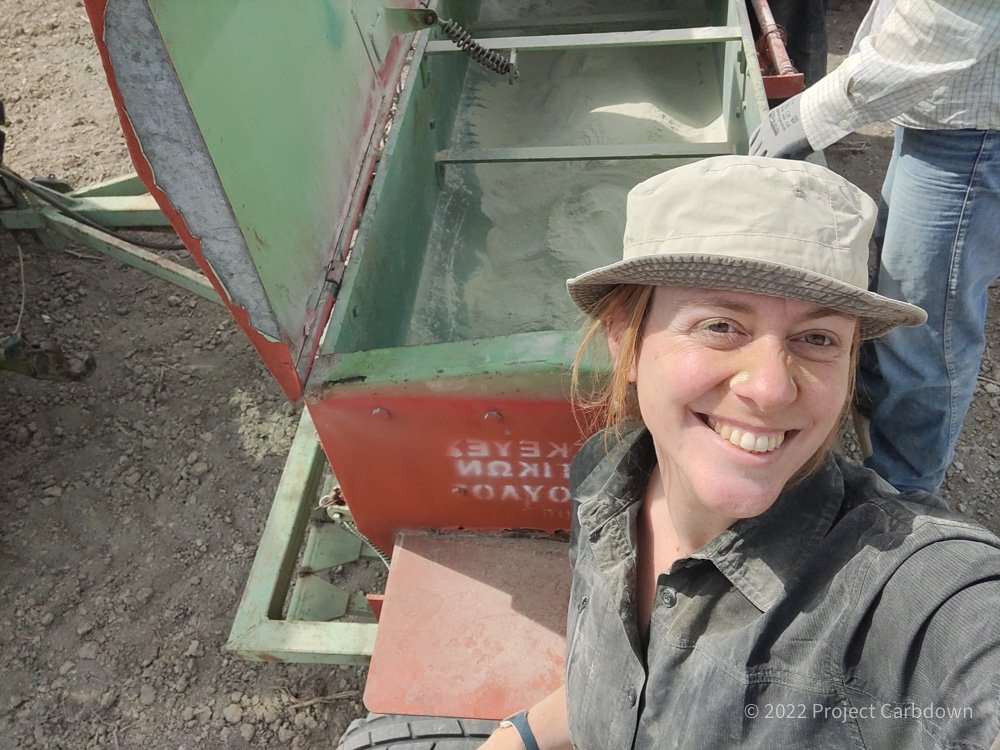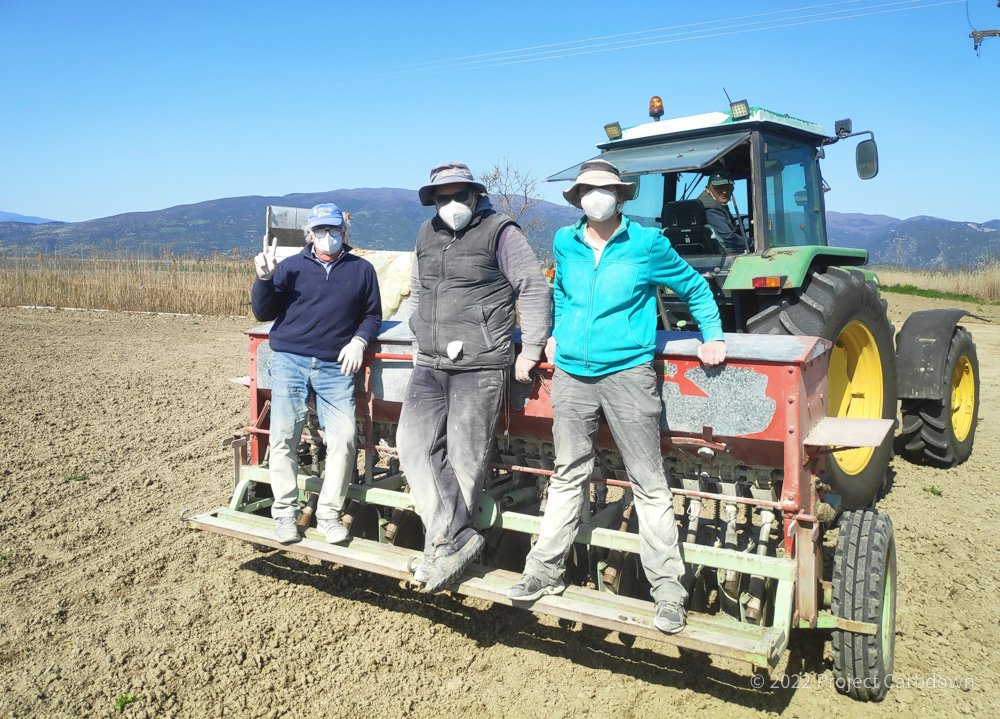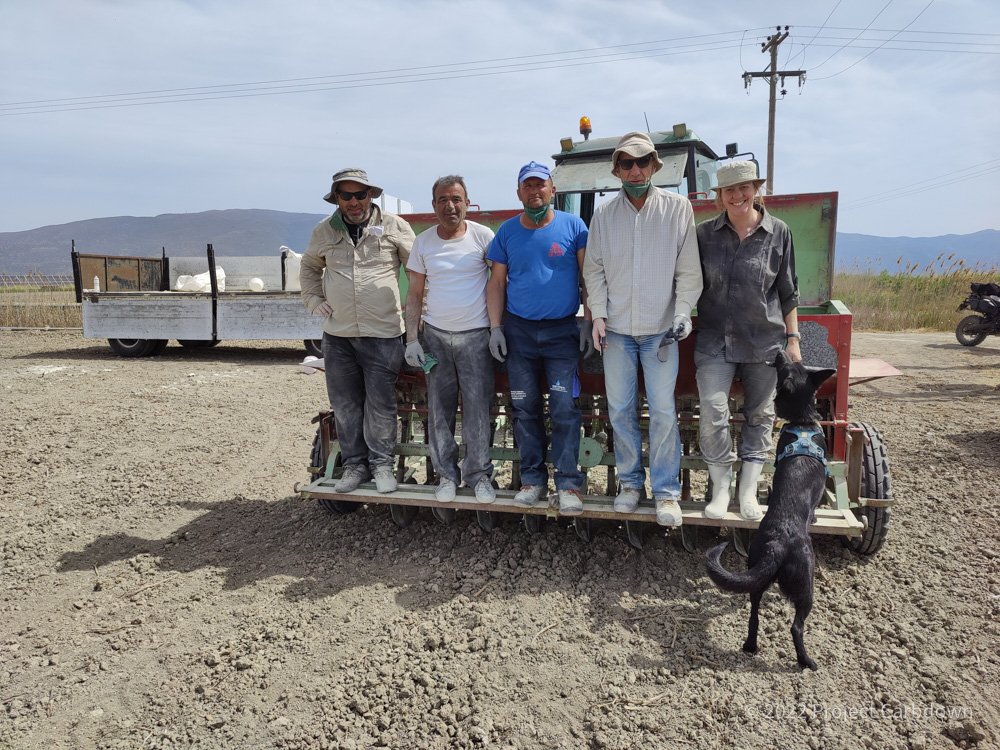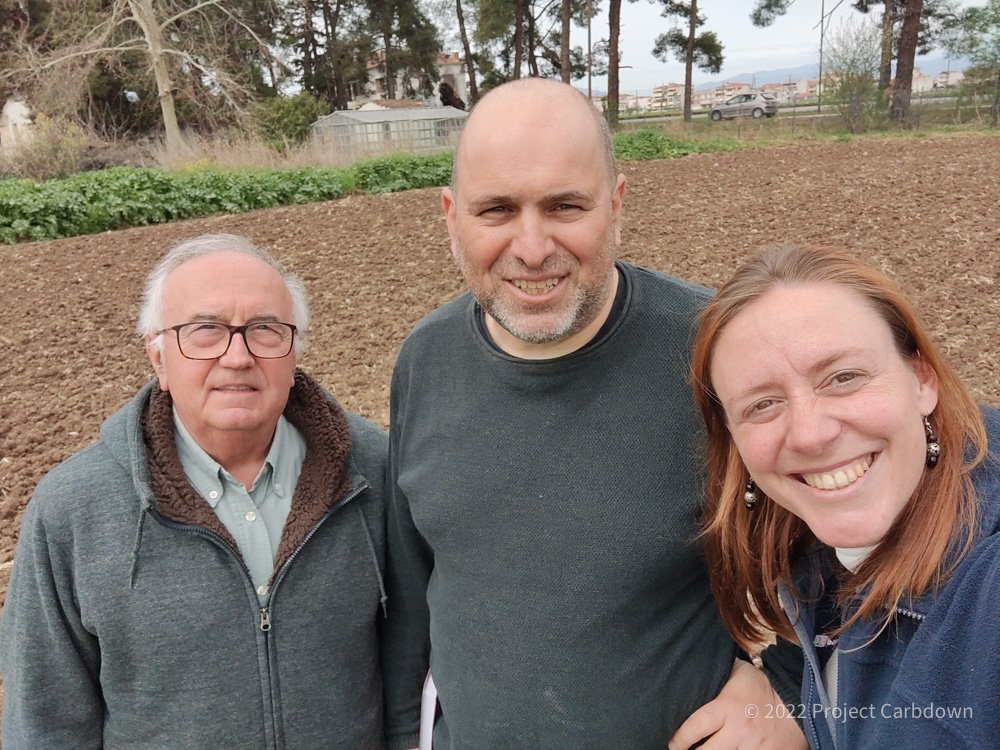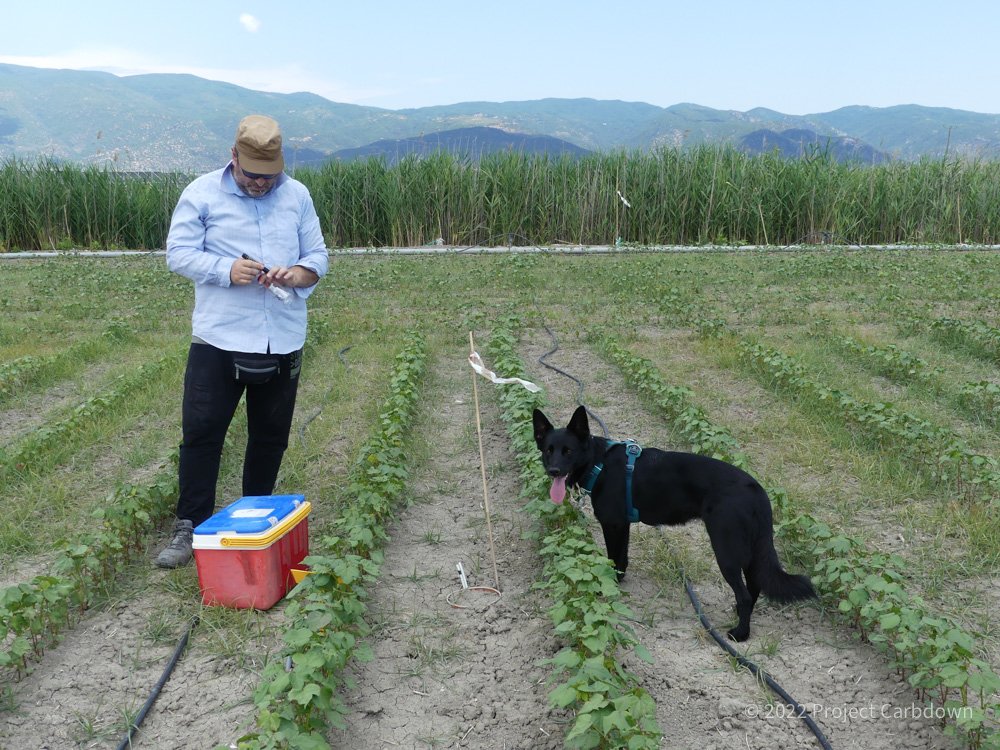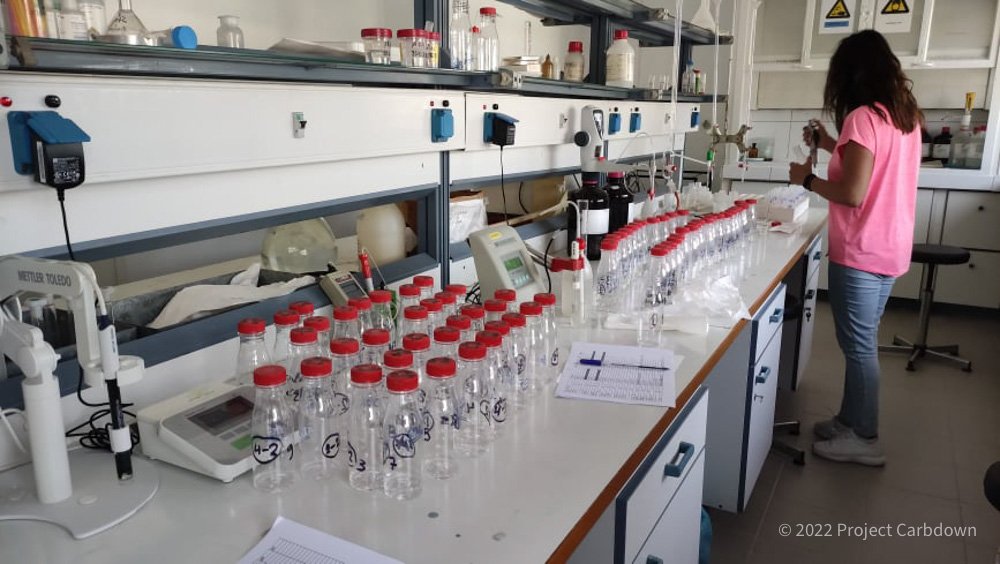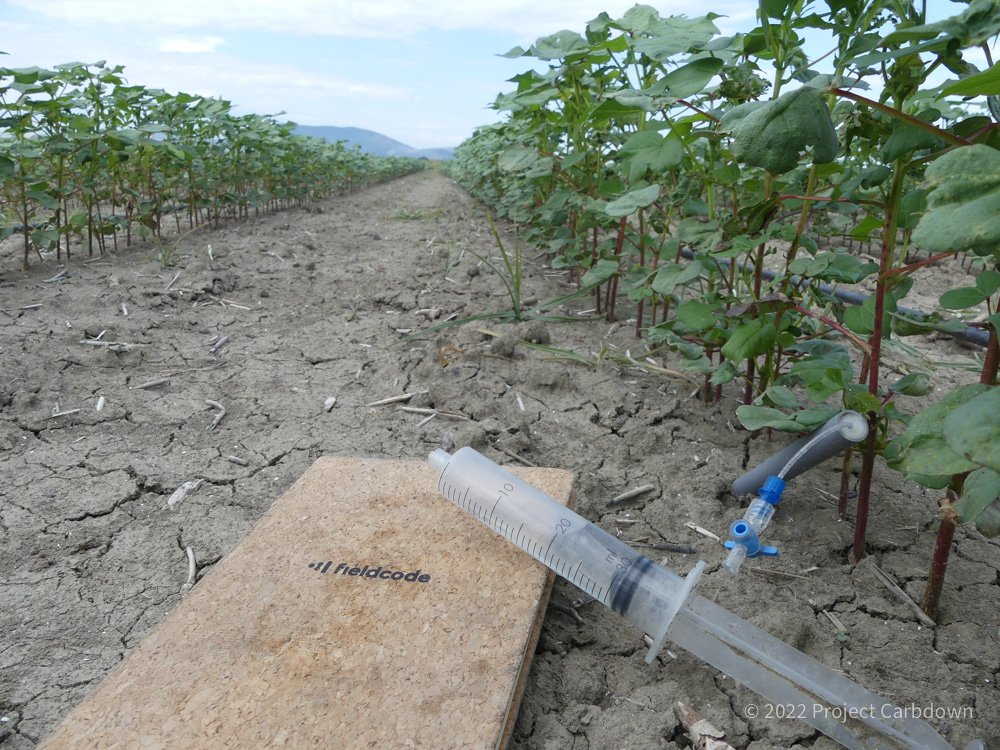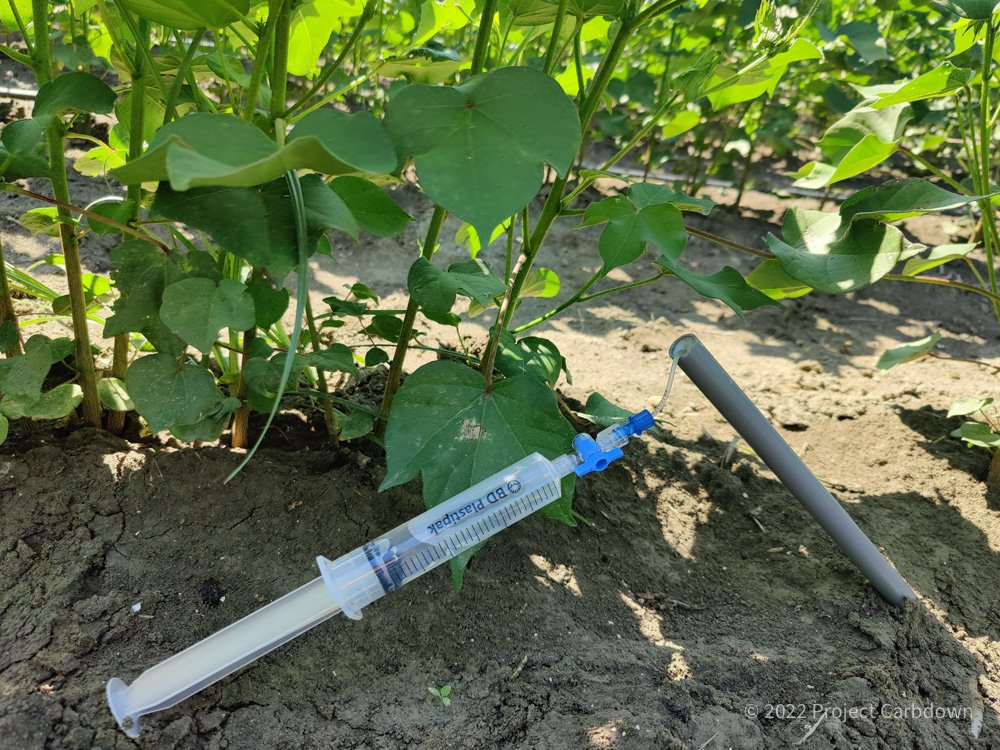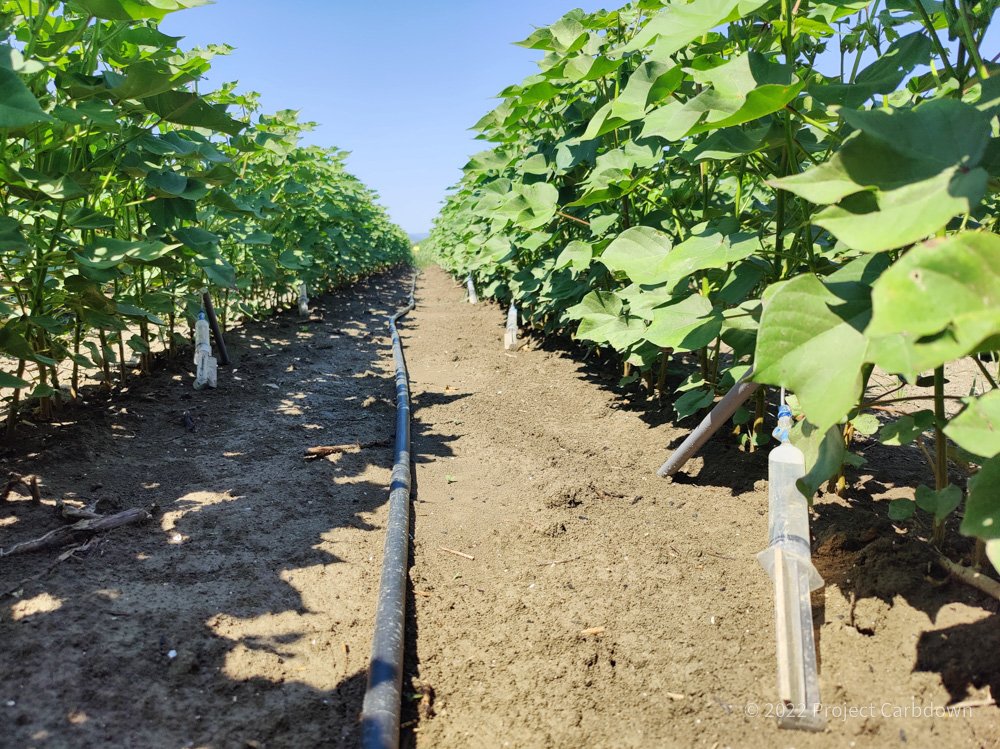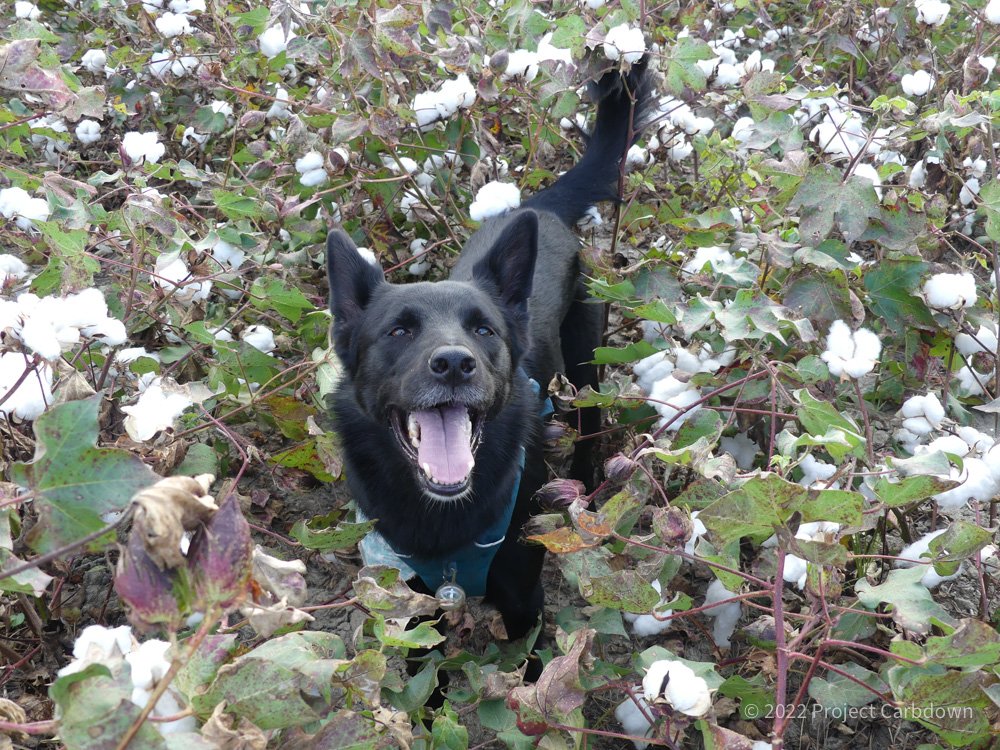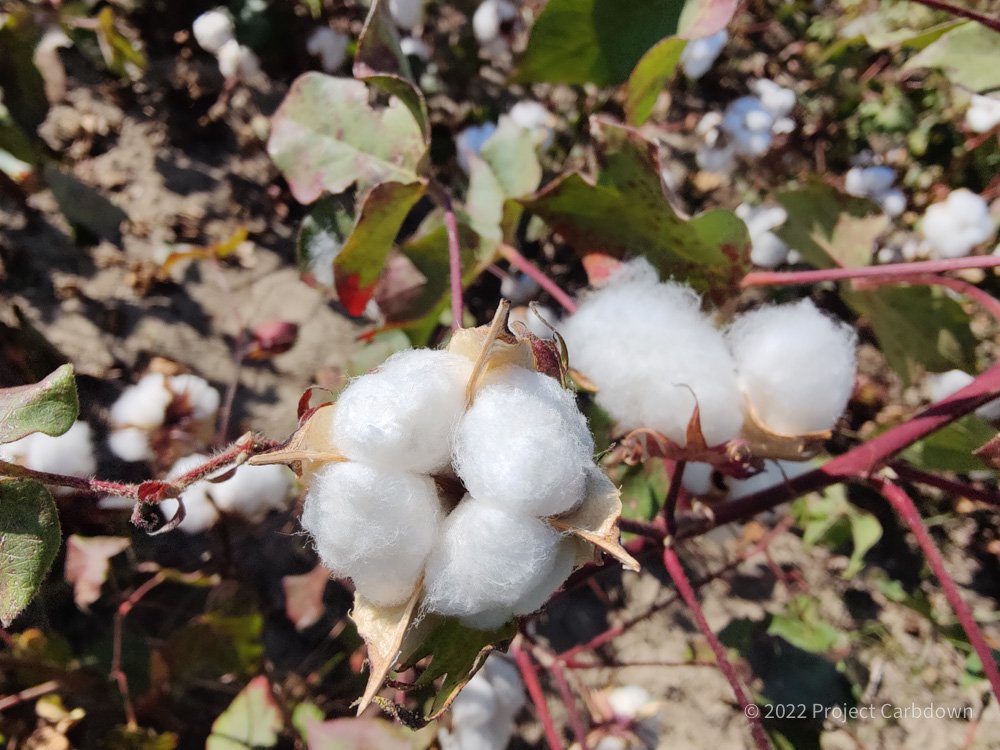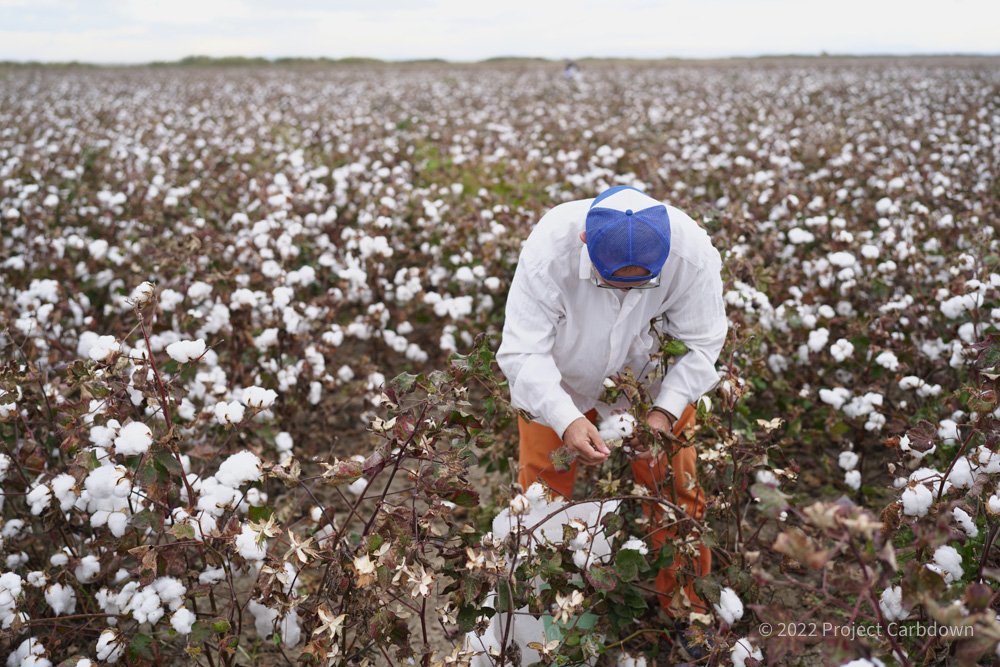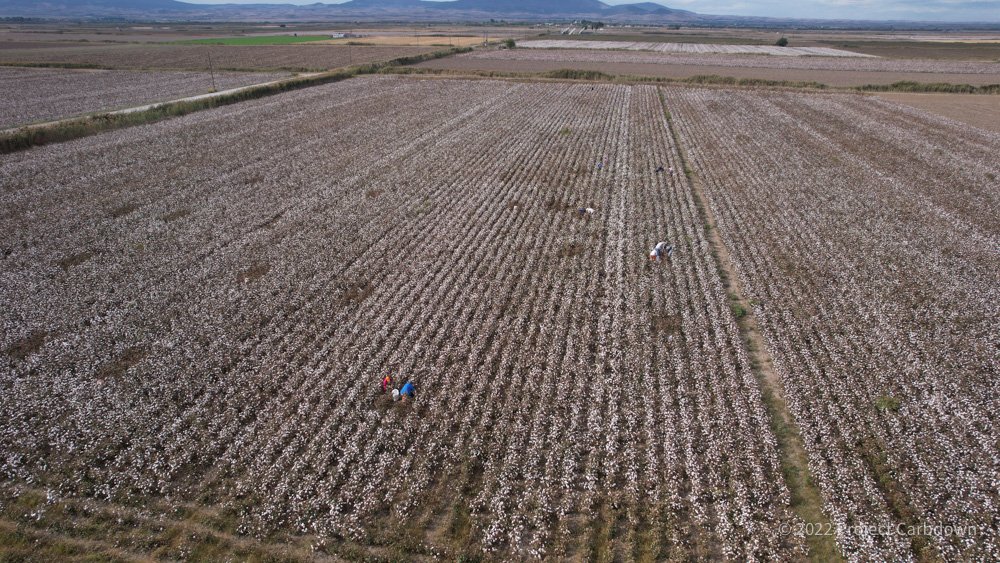Carbon Negative/Climate Positive Cotton - A report about our initial field experiments in Greece in 2021
Last year Project Carbdown’s endeavours in Greece kicked off with the addition of 6 different olivine rich rock dusts (a total of 4500 kg) to a 2 hectare cotton field in Thessaly. In this guest-blog-post Dr. Ingrid Smet introduces her detailed report on all the do’s & don’ts, lightbulb & head scratch moments, behind-the-scenes information & preliminary conclusions from the first year!
As mentioned in the very first post of this blog, we started our journey to negative emissions in September 2020 together with partner company Fieldcode. Up to now, our blog posts mainly focused on the knowledge we gathered from the testing-learning-rethinking iterative process carried out on a quick succession of Germany based enhanced weathering (EW) experiments.
So let’s see now what progress the Greece based team made with their Olivine Project in the meantime.
Quick refresher/introduction to ERW
To prevent the worst possible unfolding of the current climate crisis we need to drastically (90%) and quickly (rather today than tomorrow) reduce our greenhouse gas (GHG) emissions. On top of this 90% emissions reduction, we need to also remove as much historically emitted GHGs as possible. Might sound ‘Mission Impossible’ but many initiatives around the world are already working on this and together we can succeed! Since carbon dioxide (CO₂) is the main culprit of the GHGs, many endeavours focus on carbon dioxide removal (CDR) from the atmosphere/natural environment. Not to be confused with collecting CO₂ from an anthropogenic emission source which is not CDR!
Besides technological CDR processes there are also nature-based solutions. An obvious one is the natural weathering of rocks which annually removes about 1.1 Gton of CO₂. Although this might sound like a lot already, this million-years-old natural CDR process of rock weathering cannot keep up with our anthropogenic emissions. Hence, we need to speed up this natural process. Rock weathering is the dissolution of rocks, a chemical process whereby water, rock particles and CO₂ combine into a new carbon compound and cations are created. So called enhanced weathering involves crushing the rocks to enlarge their chemical reactive surface (crushed ice melts faster than an ice block) and spreading this rock powder into a favourable environment (ice melts easier in the Sahara than on Antarctica). The chemical rock dissolution thereby speeds up at higher temperatures and when the necessary ingredients (water and CO₂) are present in bigger amounts.
Because (1) soils generally contain more CO₂ than ambient air – especially in the soil area of plant roots, (2) vast surface areas across the world are used for agriculture, and (3) a number of these are intensely irrigated during hotter periods, EW could be combined with existing farming practices. Research into the real-life potential of EW as large-scale CDR method, as well as possible negative or positive side effects, has therefore grown exponentially over the past years – and will continue to snowball in the near future.
Let’s start pointing out the main differences with the field experiments that were simultaneously carried out in Germany:
Obviously, there is a hotter and drier climate in Greece.
The Greek field we found to ‘play around in’ is part of drained lake, resulting in a very different soil. (Theoretically less appropriate for EW but it was what we could find during a strict Covid19 lockdown.)
As Greece annually cultivates about 250,000 hectares of cotton, a crop that needs a lot of irrigation during summer, we decided to work with this plant – making it the first EW experiment with cotton worldwide!
Finally, we got a tad over enthusiastic with regards to what rock dusts to test (I am, after all, a geologist…) and ended up applying the same basalt as in Germany besides 5 other European rock dusts containing a lot of olivine... (Olivine is a mineral with high EW potential also present in basalt – albeit in lower amounts). Our focus on olivine rich rocks rather than basalt is also because there are currently 2 active quarries in mainland Greece excavating and crushing these olivine rich rocks, but no local basalt. Oh, and we added biochar to some of the Greek olivine rich rocks, too.
Curious to learn more about the design of our field experiment and the details on our soil and rocks? Dive into the full 2021 Progress Report!
Important also is this experiment’s dual design: one part of the field focuses on testing the practicalities of rock dust application on large areas using existing farming equipment, the other part is dedicated to studying the EW process, its potential for CDR and possible side effects on the crop, soil or soil water. We teamed up with Greek soil scientists from the Agricultural Institute in Larisa to take on this task – which none of us had any prior experience with.
But like the Project Carbdown teams in northern Europe we learned immensely, through fun and frustration! In order to share this hard-won experience we describe everything step-by-step in the report, as sort of a manual of the experiment setup. We then sampled soil, cotton plant leaves, soil water and cotton balls from April through to October and carried out multiple analyses on these samples.
The main conclusions that we could draw from this first EW season are:
Olivine rich rock dusts do not have any negative effect on the cotton yield or quality.
They also do not affect the quality of the field’s soil or soil water.
But just as in the 2021 ‘cousin’ field experiments in Germany, we could not equivocally identify the ‘chemical signature’ of the EW processes. Meanwhile we understand that this is linked to the process of the EW products being adsorbed to soil particles (we call this the sponge or the garage).
Some slightly higher Ni soil contents might be observeable in late 2021, but as the Ni background level is already quite high in the soil and the field’s soil chemistry heterogeneous, we can not be sure that this is due to EW.
Similarly, there might be a tendence of higher amounts of Ni in the soil water collected from olivine rich rock treatments that also include biochar.
With this information we looked ahead to the second year, 2022, of the Olivine Project and decided to continue the cotton field experiment for another season in order to confirm and further investigate the above observations. In addition, we chose another field with a different soil – theoretically more suitable for EW – to set up a new field experiment according to the lessons learned from the first one.
You can find all the above information in more detail, and with illustrations, in the Olivine Project 2021 Progress Report – freely downloadable for anyone who wants it. Any feedback, suggestions or questions regarding our EW field experiments are always more than welcome via ingrid.smet@fieldcode.com. Happy reading!


